
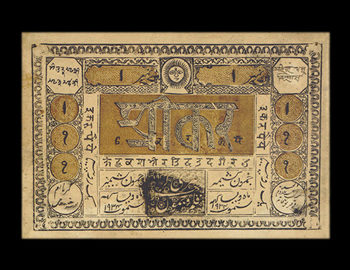
The countdown has started, in three days we all will be celebrating the 100th birthday of one rupee note. Today one rupee note is the smallest denomination in the monetary system of India. One rupee has a long history. The first one rupee note was introduced in 1917. During the time of British rule in India, there were a few Princely States, which issued their own paper currency. The Princely State of Hyderabad and Jammu & Kashmir were the only authority to issue one rupee note in their currency system. Let’s see few one rupee notes of Hyderabad and Jammu & Kashmir!
Continue reading One rupee notes of Hyderabad and Jammu & Kashmir
The Mintage World Team comprises of experts, researchers and writers from the field of Philately, Notaphily and Numismatics who try to shed light on some of the most interesting aspects of coins, banknotes and stamps from not just India but across the globe as well.
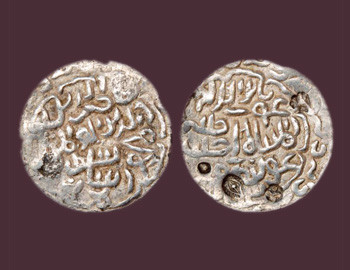
Manufacturing fake currency or counterfeit money is illegal in every country as they are produced without the consent of the Central Bank or the Government. It can lead to major setbacks on the economic stability of a country. More circulating money means that its value depreciates over time which in turn leads to inflation. It also results in mistrust among people decreasing acceptability of money and sharemarket value. Trade is the most affected when merchants have to face immense losses as fake notes are not reimbursed by banks of other countries.
Continue reading History of Fake Currency
The Mintage World Team comprises of experts, researchers and writers from the field of Philately, Notaphily and Numismatics who try to shed light on some of the most interesting aspects of coins, banknotes and stamps from not just India but across the globe as well.
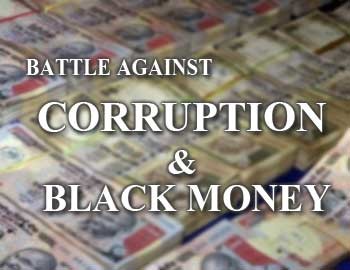
Corruption, Bribes and Black money..problems that had riddled India since decades. These problems had become increasingly prominent in the recent years and we are not new to the series of scams that have come to light like the Adarsh Housing Society scam, the 2010 House loan scam, 2G spectrum scam and much more. Finally, on the 8th of November 2016, India fights backs, India fights corruption!
Continue reading India fights corruption: One Move and Checkmate!
The Mintage World Team comprises of experts, researchers and writers from the field of Philately, Notaphily and Numismatics who try to shed light on some of the most interesting aspects of coins, banknotes and stamps from not just India but across the globe as well.
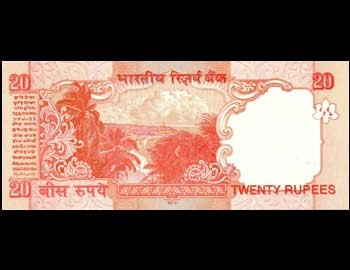
Being an Indian, how many of you know how many states India is comprised of? Don’t start googling yet. Hmm well, we have 29 states and 7 union territories. Each state is like a different flavoured chocolate in a basket full of goodies, you would want all of them, but won’t know where to start. Out of the seven union territories, Diu, Lakshadweep and Andaman and Nicobar are islands. It’s almost impossible to maybe understand the diversity that India is known for all over the world, from where you are reading this article right now. Even then, let’s go back in time and explore the history of Andaman and Nicobar Islands today and see what juices you’ve got in there!
Continue reading History of Andaman and Nicobar Islands and 20 Rupees Indian Banknote
The Mintage World Team comprises of experts, researchers and writers from the field of Philately, Notaphily and Numismatics who try to shed light on some of the most interesting aspects of coins, banknotes and stamps from not just India but across the globe as well.
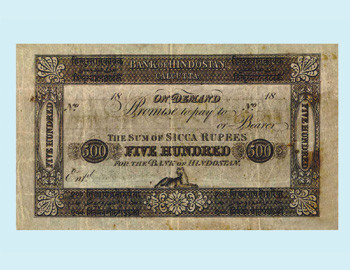
In today’s times, a 100 Rupees note is very commonly used and circulated throughout the country on a large scale. Any average Indian would need at least a 100 Rupees note to survive a normal day in the country. But have you ever wondered, the 100 Rs note that you probably have in your wallet at the moment has gone through several design changes? Yes, right from Hindostan Bank issues to Bank of Bengal let’s find out the major and minor design changes that have been made to the Rs. 100 banknote over the years.
Continue reading History of Design Changes in 100 Rupees Note (Part 1)
The Mintage World Team comprises of experts, researchers and writers from the field of Philately, Notaphily and Numismatics who try to shed light on some of the most interesting aspects of coins, banknotes and stamps from not just India but across the globe as well.
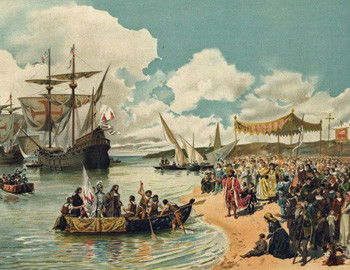
While Christopher Columbus sailed west, looking for the India. Vasco da Gama sailed south and east and found what the others were looking for. It was on 20th May 1498 Portuguese sailor Vasco da Gama set foot on the west coast of India. The arrival of Portuguese in India encouraged many other European countries to sail eastwards. India soon became a market for the western countries.
Continue reading Vasco Da Gama: The Sailor Who Discovered The Land of Spices
The Mintage World Team comprises of experts, researchers and writers from the field of Philately, Notaphily and Numismatics who try to shed light on some of the most interesting aspects of coins, banknotes and stamps from not just India but across the globe as well.
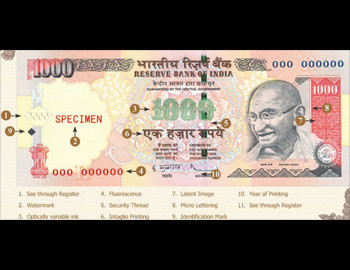
They say technology has its own side-effects. One of them is that it has led to increased counterfeiting activities. The reason behind this is the vast improvement in printing technologies. Making fake notes keeps getting easier than before due to these advancements. Stern measures have to be taken to counter such kind of illegal activities. Central banks all over the world keep upgrading and implementing the latest security features on banknotes to tackle this serious problem. Let’s take a look at the security features on Indian banknotes which will help you identify real and fake notes.
Continue reading Security features on Indian Banknotes
The Mintage World Team comprises of experts, researchers and writers from the field of Philately, Notaphily and Numismatics who try to shed light on some of the most interesting aspects of coins, banknotes and stamps from not just India but across the globe as well.
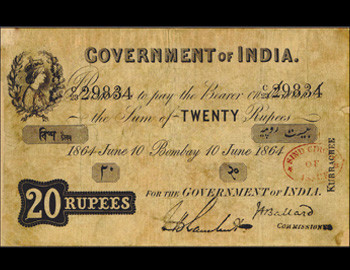
After the Paper Currency Act was enacted in 1861 CE under the rule of British India, paper money began to be officially issued by the government. The act effectively ended the bank’s authority to issue notes. It gave the government monopoly over currency issues in India. James Wilson, the first Finance Member of the Government of India in 1859 CE, put in place initiatives that would introduce Indian banknotes issued by the government.
Continue reading Indian Banknotes – British Indian Government Issues
The Mintage World Team comprises of experts, researchers and writers from the field of Philately, Notaphily and Numismatics who try to shed light on some of the most interesting aspects of coins, banknotes and stamps from not just India but across the globe as well.
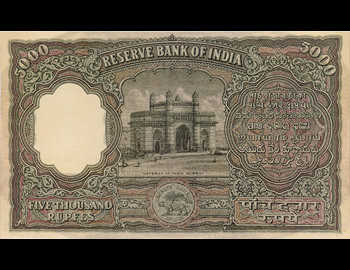
India has a magnificent history. All of it is beautifully reflected on the kind of architecture and monuments that the country is adorned with. Some of it is as old as thousand long years. Monuments on Indian banknotes will give you an overview about the country’s illustrious past. Let’s take a tour then.
Continue reading Monuments on Indian Banknotes
The Mintage World Team comprises of experts, researchers and writers from the field of Philately, Notaphily and Numismatics who try to shed light on some of the most interesting aspects of coins, banknotes and stamps from not just India but across the globe as well.
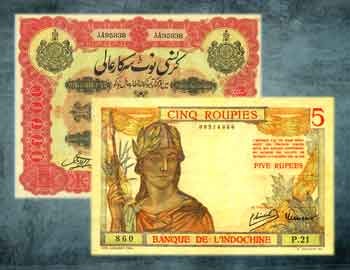
History of currency notes of India went through several transformations which can be mapped to important events and administrative policies during the era when they were issued. Though notes issued by Bengal, Mumbai & Madras Presidencies and East India Company were mostly in circulation before independence, there were some exceptions in certain parts of the country which were under the rule of French, Portuguese and some independent dynasties. Let’s explore the types of Indian notes that were released by these administrative authorities apart from the British.
Continue reading Pre-Republic Colonial and Princely State Issues
The Mintage World Team comprises of experts, researchers and writers from the field of Philately, Notaphily and Numismatics who try to shed light on some of the most interesting aspects of coins, banknotes and stamps from not just India but across the globe as well.